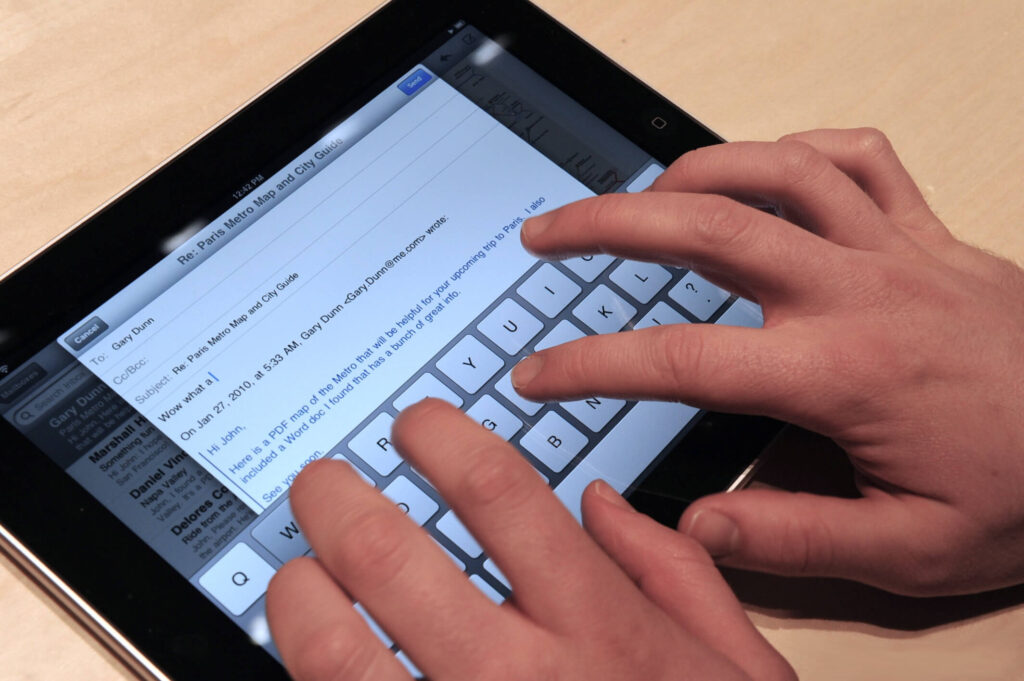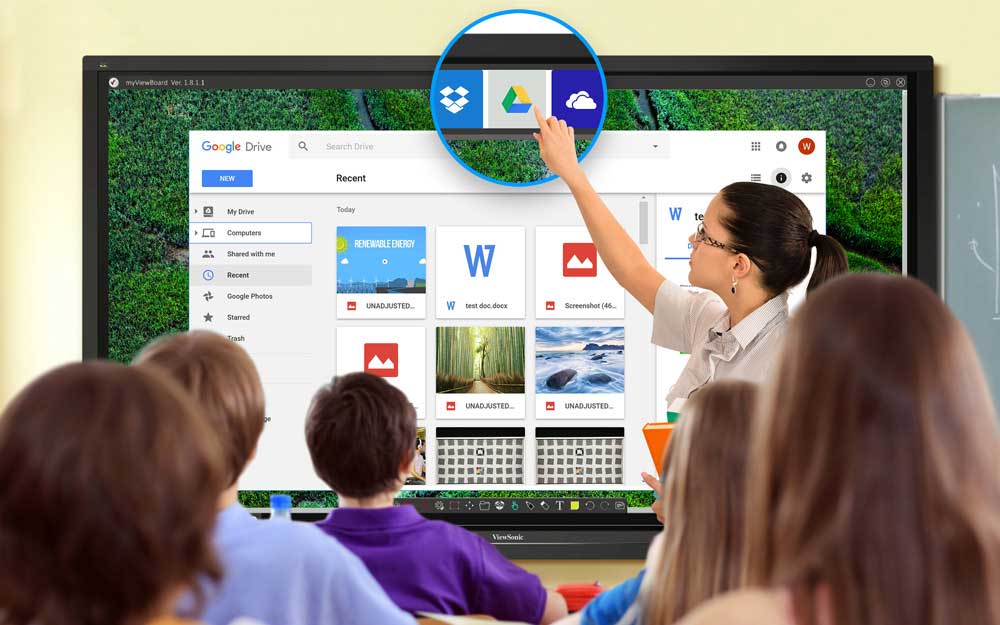Εισαγωγή των οθονών αφής
Οι οθόνες αφής έχουν αλλάξει δραματικά τον τρόπο με τον οποίο ασχολούμαστε με την τεχνολογία, και η επιρροή τους στην εκπαίδευση είναι ιδιαίτερα αξιοσημείωτη. Αυτά τα προηγμένα εργαλεία έχουν αναμορφώσει τις παραδοσιακές αίθουσες διδασκαλίας σε διαδραστικούς χώρους που αιχμαλωτίζουν τους μαθητές και εμβαθύνουν την κατανόηση πολύπλοκων θεμάτων.
Επανάσταση στην αλληλεπίδραση στην τάξη
Οι οθόνες αφής έχουν φέρει επανάσταση στα εκπαιδευτικά περιβάλλοντα, μετατρέποντας τις αίθουσες διδασκαλίας σε δυναμικούς, διαδραστικούς χώρους. Οι συσκευές αυτές εμπλέκουν άμεσα τους μαθητές, καθιστώντας τα μαθήματα πιο συναρπαστικά και βοηθώντας τους να κατανοήσουν πιο αποτελεσματικά πολύπλοκες έννοιες.
Ενίσχυση της χειροκίνητης μάθησης με οθόνες αφής
Ένα από τα βασικά πλεονεκτήματα των οθονών αφής στην εκπαίδευση είναι η ικανότητά τους να υποστηρίζουν την πρακτική μάθηση. Επιτρέποντας στους μαθητές να αλληλεπιδρούν άμεσα με το περιεχόμενο, οι συσκευές αυτές κάνουν τη μάθηση πιο ελκυστική και αξιομνημόνευτη. Αυτή η διαδραστική προσέγγιση ενισχύει την εμπλοκή των μαθητών, τη διατήρησή τους και τις ακαδημαϊκές τους επιδόσεις.
Οθόνες αφής μπορεί να ανταποκριθεί σε διαφορετικά στυλ μάθησης
Οι οθόνες αφής παρέχουν ένα ευρύ φάσμα εκπαιδευτικών εργαλείων και εφαρμογών που ταιριάζουν σε διαφορετικά στυλ μάθησης και προτιμήσεις. Από ψηφιακά εγχειρίδια και κουίζ μέχρι διαδραστικά σεμινάρια και παιχνίδια, οι συσκευές αυτές προσφέρουν ευέλικτους πόρους που μπορούν να προσαρμοστούν ανάλογα με τις ατομικές μαθησιακές ανάγκες. Αυτή η προσαρμοστικότητα επιτρέπει στους εκπαιδευτικούς να διαφοροποιούν αποτελεσματικά τη διδασκαλία.
Προώθηση της συνεργασίας και της επικοινωνίας
Οι οθόνες αφής ενισχύουν τη συνεργασία και την επικοινωνία μεταξύ των μαθητών. Χαρακτηριστικά όπως η προβολή σε χωριστή οθόνη και οι δυνατότητες πολλαπλής αφής επιτρέπουν στους μαθητές να εργάζονται μαζί σε εργασίες, να μοιράζονται ιδέες και να επιλύουν προβλήματα συλλογικά. Αυτό το συνεργατικό περιβάλλον καλλιεργεί την κριτική σκέψη, τη δημιουργικότητα και την ομαδική εργασία - δεξιότητες απαραίτητες για το σύγχρονο εργασιακό περιβάλλον.
Γεφύρωση παραδοσιακής και ψηφιακής εκπαίδευσης
Οι οθόνες αφής έχουν τη δυνατότητα να ενσωματώσουν απρόσκοπτα την παραδοσιακή και την ψηφιακή εκπαίδευση. Με την ενσωμάτωση ψηφιακού περιεχομένου στην τάξη, οι εκπαιδευτικοί μπορούν να δημιουργήσουν μια μικτή μαθησιακή εμπειρία που συνδυάζει τα πλεονεκτήματα τόσο των παραδοσιακών όσο και των σύγχρονων μεθόδων διδασκαλίας. Η προσέγγιση αυτή διασφαλίζει ότι οι μαθητές είναι προετοιμασμένοι με τις τεχνολογικές δεξιότητες που είναι απαραίτητες για την επιτυχία στον σημερινό ψηφιακό κόσμο.
Συμπέρασμα των οθονών αφής
Εν κατακλείδι, οι οθόνες αφής μεταμορφώνουν σε βάθος την εκπαίδευση και τη μάθηση. Από τη διευκόλυνση της διαδραστικής και πρακτικής μάθησης έως την προώθηση της συνεργασίας και τη γεφύρωση του χάσματος μεταξύ της παραδοσιακής και της ψηφιακής εκπαίδευσης, οι συσκευές αυτές αναδιαμορφώνουν την εμπειρία της τάξης. Καθώς η τεχνολογία συνεχίζει να εξελίσσεται, οι εκπαιδευτικοί πρέπει να αγκαλιάσουν τις δυνατότητες των οθονών αφής για να δημιουργήσουν καινοτόμα και αποτελεσματικά μαθησιακά περιβάλλοντα για τους μαθητές τους.
Περίληψη FAQ: Οθόνες αφής στην εκπαίδευση
1.Πώς οι οθόνες αφής μεταμορφώνουν την εκπαίδευση;
Οι οθόνες αφής φέρνουν επανάσταση στις τάξεις δημιουργώντας δυναμικά, διαδραστικά μαθησιακά περιβάλλοντα που ενισχύουν τη δέσμευση των μαθητών και την κατανόηση σύνθετων εννοιών.
2.Ποια είναι τα βασικά πλεονεκτήματα των οθονών αφής στην εκπαίδευση;
Πρακτική μάθηση:Οι οθόνες αφής επιτρέπουν στους μαθητές να αλληλεπιδρούν άμεσα με το εκπαιδευτικό περιεχόμενο, καθιστώντας τη μάθηση πιο ελκυστική και βελτιώνοντας τη διατήρηση και τις ακαδημαϊκές επιδόσεις.
Διαφορετικά στυλ μάθησης:Οι συσκευές αυτές προσφέρουν μια σειρά εργαλείων και εφαρμογών που ανταποκρίνονται στις διαφορετικές μαθησιακές προτιμήσεις, επιτρέποντας την εξατομικευμένη διδασκαλία.
Συνεργασία και επικοινωνία:Οι οθόνες αφής προωθούν την ομαδική εργασία μέσω λειτουργιών όπως η προβολή σε χωριστή οθόνη και οι δυνατότητες πολλαπλής αφής, ενισχύοντας την κριτική σκέψη και τη δημιουργικότητα.
Μικτή μάθηση:Συμβάλλουν στη γεφύρωση της παραδοσιακής και της ψηφιακής εκπαίδευσης, ενσωματώνοντας τις καλύτερες πτυχές και των δύο για να προετοιμάσουν τους μαθητές για έναν ψηφιακό κόσμο.
3.Πώς οι οθόνες αφής υποστηρίζουν διαφορετικά στυλ μάθησης;
Οι οθόνες αφής παρέχουν ευέλικτους πόρους, όπως ψηφιακά εγχειρίδια, διαδραστικά σεμινάρια και εκπαιδευτικά παιχνίδια που μπορούν να προσαρμοστούν ώστε να καλύπτουν τις ατομικές μαθησιακές ανάγκες.
4.Με ποιους τρόπους οι οθόνες αφής ενισχύουν τη συνεργασία στην τάξη;
Με χαρακτηριστικά όπως η δυνατότητα πολλαπλής αφής και η προβολή σε χωριστή οθόνη, οι οθόνες αφής επιτρέπουν στους μαθητές να εργάζονται μαζί σε εργασίες, να μοιράζονται ιδέες και να επιλύουν προβλήματα ως ομάδα.
5.Πώς οι οθόνες αφής συνδυάζουν την παραδοσιακή και την ψηφιακή εκπαίδευση;
Με την ενσωμάτωση ψηφιακού περιεχομένου στην τάξη, οι οθόνες αφής δημιουργούν μια ολιστική μαθησιακή εμπειρία που συνδυάζει τις παραδοσιακές μεθόδους διδασκαλίας με σύγχρονες τεχνολογικές δεξιότητες, απαραίτητες για τη μελλοντική επιτυχία των μαθητών.
6.Γιατί οι εκπαιδευτικοί πρέπει να υιοθετήσουν τις οθόνες αφής στις μεθόδους διδασκαλίας τους;
Οι οθόνες αφής προσφέρουν καινοτόμους και αποτελεσματικούς τρόπους για την εμπλοκή των μαθητών, την υποστήριξη διαφορετικών μαθησιακών αναγκών και την προετοιμασία τους για έναν ταχέως εξελισσόμενο ψηφιακό κόσμο, καθιστώντας τες πολύτιμο εργαλείο στη σύγχρονη εκπαίδευση.


